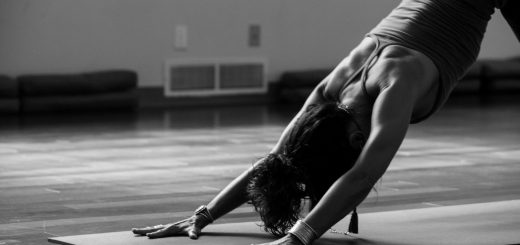Power Yoga: Building Strength and Stamina

Before diving in, please note: This post is for informational purposes only. If you’d like to know more about how we approach topics, feel free to check out our friendly Disclaimer Page.
Hey there, amazing readers! 🖐️ Just a quick note: yes, we know there are a lot of ads here. Trust us, we get it—it’s not the prettiest look, but they help us keep this blog alive and kicking. Those pesky little ads cover the costs of all the behind-the-scenes magic, from hosting and tech stuff to creating content we hope you’ll love.
We’re committed to delivering quality posts, and your support (even just sticking around despite the ads) means everything to us. So, bear with us, and thanks for helping us keep the good vibes rolling. Now, on to the fun stuff! 😉
TRANSLATE BUTTON AT THE END OF THE ARTICLE
Introduction to Power Yoga
Power yoga is a dynamic and challenging form of yoga that focuses on building strength and stamina while improving flexibility and balance.
Unlike traditional yoga, which may have a more meditative or gentle approach, power yoga is fast-paced and intense, incorporating flowing sequences of poses that require both physical and mental endurance.
This style of yoga is perfect for those looking to push themselves physically, as it can help you develop muscle tone, increase cardiovascular fitness, and boost overall body strength.
Benefits of Power Yoga
The benefits of power yoga are numerous and far-reaching.
Not only does it help build physical strength and stamina, but it also improves flexibility, balance, and mental focus.
Power yoga can be a great way to relieve stress and tension, as the challenging poses require concentration and mindfulness.
Additionally, practicing power yoga regularly can help increase your metabolism, aid in weight loss, and improve overall body awareness.
It’s a full-body workout that engages all muscle groups, leading to a toned and sculpted physique.
Key Principles of Power Yoga
Power yoga is rooted in several key principles that set it apart from other styles of yoga.
These principles include:
Breath Awareness: Power yoga emphasizes the importance of linking breath with movement, allowing for a more flowing and dynamic practice.
Strength and Endurance: Power yoga focuses on building physical strength and endurance through challenging sequences of poses.
Balance and Flexibility: While strength is a key component, power yoga also places importance on balance and flexibility, creating a well-rounded practice.
Mindfulness: Practicing power yoga requires concentration and mindfulness, as you move through sequences with intention and focus.
Adaptability: Power yoga can be adapted to suit practitioners of all levels, making it accessible to beginners and challenging for advanced yogis.
Building Strength through Power Yoga
One of the primary goals of power yoga is to build strength throughout the entire body.
Through a series of dynamic poses and sequences, power yoga engages muscles in the arms, legs, core, and back, helping to develop lean muscle mass and increase overall strength.
Poses such as Chaturanga, Warrior poses, and Planks are commonly incorporated into power yoga classes to target different muscle groups and promote muscle growth.
By consistently practicing power yoga, you can see significant improvements in your strength and endurance over time.
Enhancing Stamina with Power Yoga
In addition to building strength, power yoga is excellent for enhancing stamina and cardiovascular fitness.
The fast-paced nature of power yoga sequences, combined with the focus on continuous movement and breath control, helps to improve endurance and stamina levels.
Practicing power yoga regularly can increase your lung capacity, improve circulation, and boost overall energy levels.
As you progress in your power yoga practice, you may find that you can sustain challenging poses for longer periods and move through sequences with greater ease and fluidity.
Power Yoga vs Traditional Yoga
While both power yoga and traditional yoga share the same roots, they differ in their approach and focus.
Traditional yoga often incorporates meditation, breathing exercises, and slower-paced movements to promote relaxation, stress relief, and spiritual connection.
On the other hand, power yoga is more physically demanding, emphasizing strength, stamina, and muscle toning.
While traditional yoga is beneficial for overall well-being and mental clarity, power yoga is designed to provide a more intense workout that challenges the body and mind in different ways.
Ultimately, the choice between power yoga and traditional yoga comes down to personal preference and fitness goals.
Beginner Tips for Power Yoga
If you’re new to power yoga, here are some tips to help you get started on the right foot:
Start Slow: Don’t push yourself too hard in the beginning.
Focus on building a strong foundation and gradually increasing the intensity of your practice.
Listen to Your Body: Pay attention to how your body feels during each pose and adjust as needed to prevent injury.
Stay Hydrated: Power yoga can be intense and sweat-inducing, so make sure to drink plenty of water before, during, and after your practice.
Take Breaks: It’s okay to take breaks during a power yoga class if you need to catch your breath or rest.
Listen to your body’s signals.
Practice Regularly: Consistency is key in power yoga.
Aim to practice several times a week to see progress and improve your strength and stamina over time.
Intermediate Power Yoga Poses
As you advance in your power yoga practice, you can start incorporating more challenging poses into your routine.
Some intermediate power yoga poses to try include:
Crow Pose (Bakasana): This arm balance pose requires core strength and balance.
Side Plank (Vasisthasana): A challenging pose that targets the core, arms, and shoulders.
Wheel Pose (Urdhva Dhanurasana): This backbend pose opens the chest and strengthens the back muscles.
Warrior III (Virabhadrasana III): A balance pose that targets the legs, core, and back muscles.
Handstand (Adho Mukha Vrksasana): An advanced inversion that requires upper body strength and balance.
Advanced Power Yoga Sequences
For those looking to take their power yoga practice to the next level, advanced sequences can provide a new challenge and opportunity for growth.
Advanced power yoga sequences may include a combination of inversions, arm balances, backbends, and challenging transitions between poses.
These sequences test your strength, flexibility, and mental focus, pushing you to your limits and helping you reach new heights in your practice.
Advanced power yoga sequences should be approached with caution and respect for your body’s limits, as they can be physically demanding and require a high level of skill and experience.
Incorporating Power Yoga into Your Routine
To benefit fully from power yoga, it’s essential to incorporate it into your regular fitness routine.
Here are some tips for integrating power yoga into your weekly schedule:
Set a Schedule: Dedicate specific days and times each week for power yoga practice to ensure consistency.
Mix it Up: Combine power yoga with other forms of exercise, such as strength training, cardio, or flexibility work, to create a well-rounded fitness program.
Join a Class: Attending a power yoga class led by a qualified instructor can help you stay motivated, learn proper technique, and challenge yourself in a supportive environment.
Practice at Home: Supplement studio classes with home practice sessions to deepen your understanding of power yoga and work on specific poses or sequences.
Track Your Progress: Keep a journal or log of your power yoga sessions to monitor your strength, stamina, and flexibility improvements over time.
Common Mistakes in Power Yoga
While power yoga can be incredibly beneficial, there are some common mistakes to avoid to prevent injury and maximize the benefits of your practice.
Some of these mistakes include:
Overexertion: Pushing yourself too hard can lead to burnout or injury.
Listen to your body’s cues and know when to take a break.
Poor Alignment: Incorrect alignment in poses can strain muscles and joints.
Focus on proper form and alignment to prevent injury.
Lack of Warm-Up: Skipping a proper warm-up can increase the risk of muscle strains or pulls.
Always take time to warm up before diving into a power yoga practice.
Comparing Yourself to Others: Everyone’s body is different, and progress looks different for each person.
Avoid comparing yourself to others in the class and focus on your own journey.
Skipping Savasana: Savasana, or final relaxation pose, is an essential part of any yoga practice.
Skipping this pose can prevent your body and mind from fully benefiting from the practice.
Conclusion: Power Yoga for Overall Fitness
In conclusion, power yoga is a fantastic way to build strength, enhance stamina, and improve overall fitness levels.
By incorporating power yoga into your routine and following key principles such as breath awareness, strength, and endurance, you can experience the numerous benefits this dynamic practice has to offer.
Whether you’re a beginner looking to improve your physical fitness or an advanced yogi seeking a new challenge, power yoga can provide a rewarding and invigorating experience that promotes holistic well-being.
So roll out your mat, breathe deeply, and dive into the world of power yoga for a transformative journey towards a stronger, fitter, and more balanced you.

The Enlightenment Journey is a remarkable collection of writings authored by a distinguished group of experts in the fields of spirituality, new age, and esoteric knowledge.
This anthology features a diverse assembly of well-experienced authors who bring their profound insights and credible perspectives to the forefront.
Each contributor possesses a wealth of knowledge and wisdom, making them authorities in their respective domains.
Together, they offer readers a transformative journey into the realms of spiritual growth, self-discovery, and esoteric enlightenment.
The Enlightenment Journey is a testament to the collective expertise of these luminaries, providing readers with a rich tapestry of ideas and information to illuminate their spiritual path.
Our Diverse Expertise 🌟
While our primary focus is on spirituality and esotericism, we are equally passionate about exploring a wide range of other topics and niches 🌍📚. Our experienced team is dedicated to delivering high-quality, informative content across various subjects ✨.
To ensure we provide the most accurate and valuable insights, we collaborate with trusted experts in their respective domains 🧑🏫👩🏫. This allows us to offer well-rounded perspectives and knowledge to our readers.
Our blog originally focused on spirituality and metaphysics, but we’ve since expanded to cover a wide range of niches. Don’t worry—we continue to publish a lot of articles on spirituality! Frequently visit our blog to explore our diverse content and stay tuned for more insightful reads.






